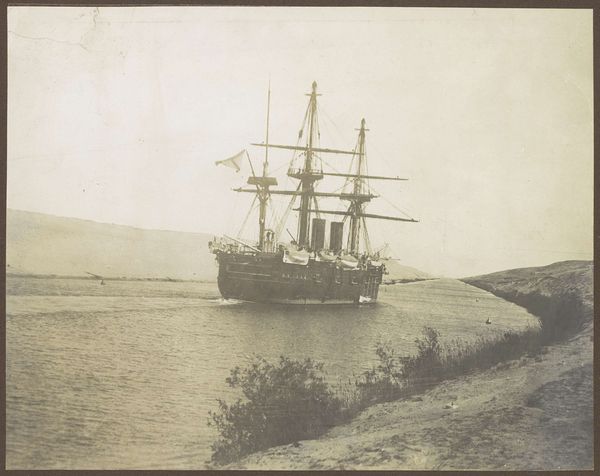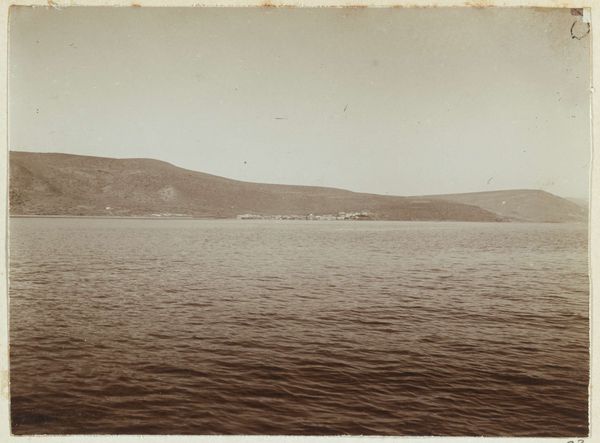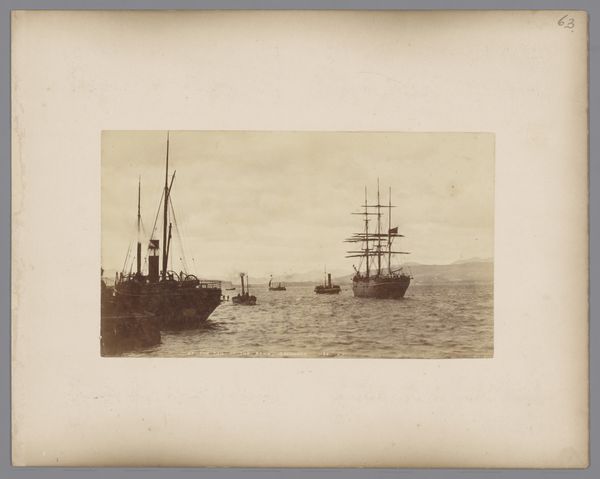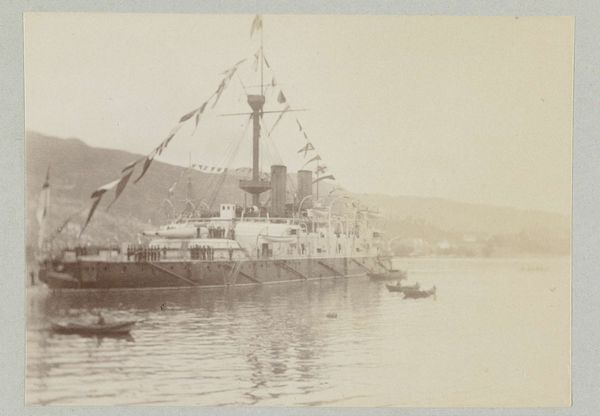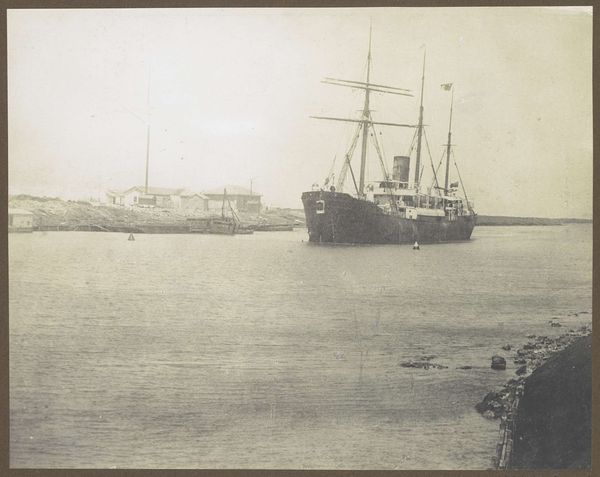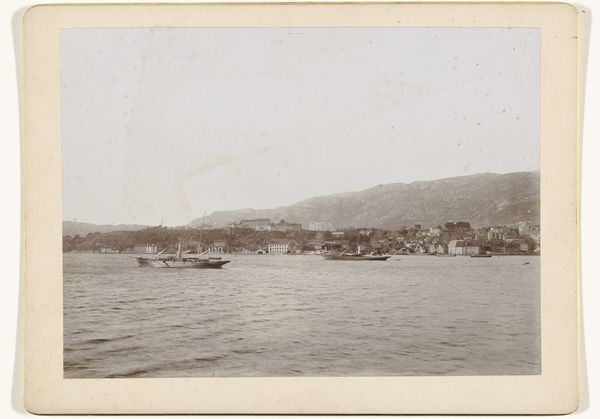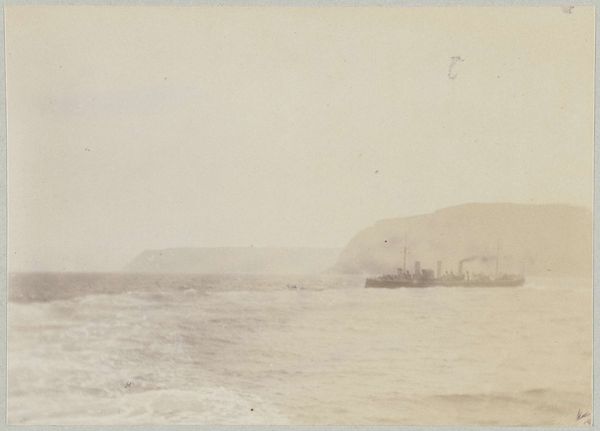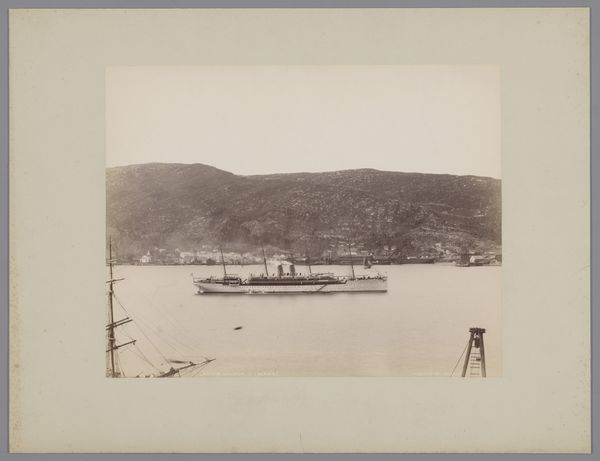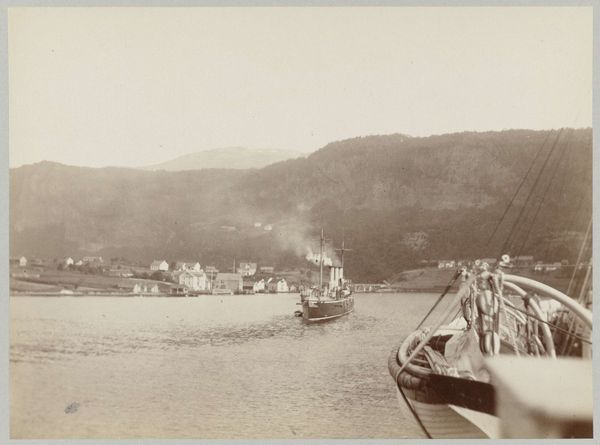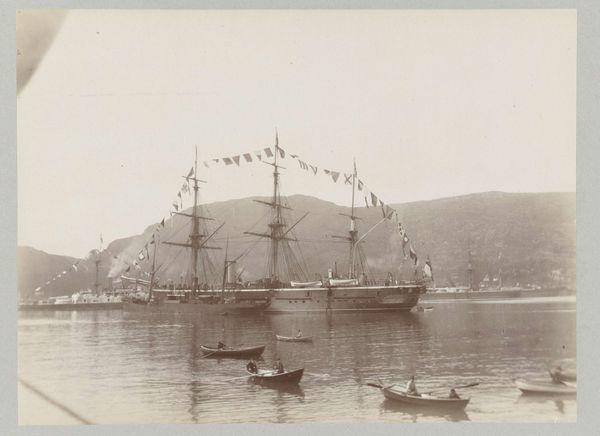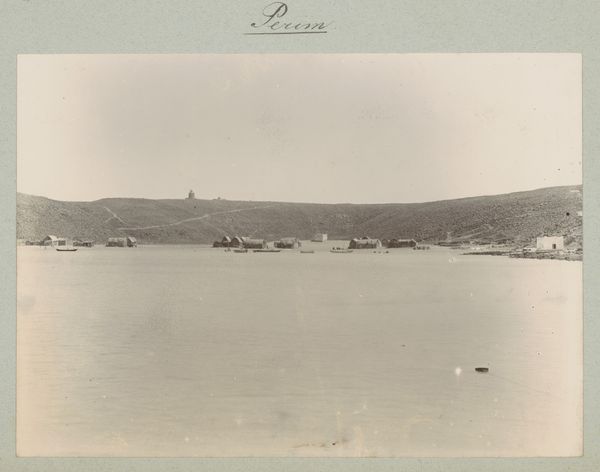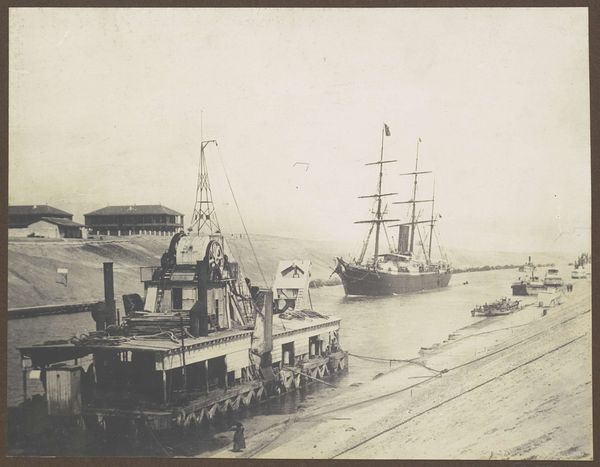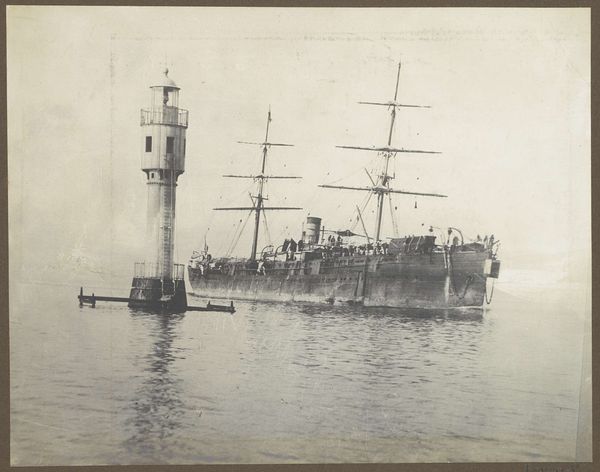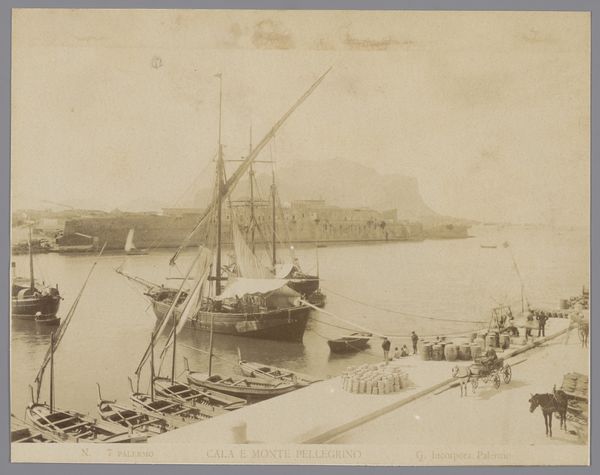
print, photography, gelatin-silver-print
# print
#
landscape
#
photography
#
gelatin-silver-print
#
watercolor
#
realism
Dimensions: height 81 mm, width 109 mm
Copyright: Rijks Museum: Open Domain
Editor: This is a gelatin-silver print from 1898, "Oorlogsschepen in de baai van Souda op Kreta" or "Warships in the bay of Souda in Crete," by Johannes Lodewijk Heldring. The sepia tone gives it an aged feel. What strikes me is the seemingly mundane depiction of warships; they appear almost like sailboats on a leisurely trip. How do you interpret this work? Curator: What's fascinating is considering this through a materialist lens: gelatin-silver wasn’t just a neutral recording device. It was a specific technology, a product of industrial chemistry, used to create these images of power. The “mundane” aspect you mention may actually point to how thoroughly intertwined military power was becoming with everyday life and representations of it, where warfare became as consumable as other images. Do you think the photographic medium itself played a role in shaping public perception of these warships? Editor: That's a great point! I hadn't considered the industrial element of the photographic process. And you're right, it’s easy to overlook the intended purpose of those ships, almost like a commercial image. The photograph, as a reproducible medium, certainly makes these warships more accessible, normalizes them, almost like a postcard. Does the gelatin-silver print add a level of ‘truth’ here? Curator: The choice of gelatin-silver, widely adopted for its reproducibility and sharpness, speaks to an intent to document and disseminate information – or perhaps, propaganda. The photograph implies a truth, an objectivity that a painting might not. And that lends authority, reinforcing a specific narrative around naval power. Think about who would have had access to these images and for what purpose. Editor: I see! The materials and means of production are directly tied to its message and its context. Thanks, that's really shifted my perspective! Curator: Absolutely. Focusing on the materiality reminds us that photographs aren't neutral windows; they are crafted objects, reflecting the technology and ideologies of their time.
Comments
No comments
Be the first to comment and join the conversation on the ultimate creative platform.
